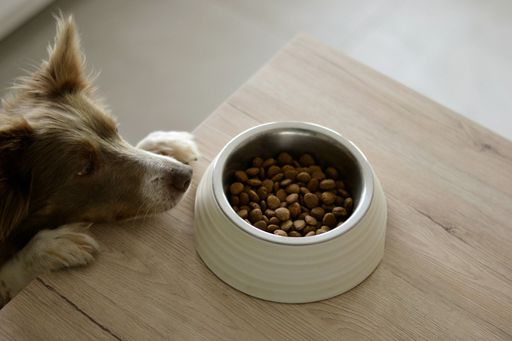Raw dog food diets have been a topic of controversy and will always bring a heated discussion with educated opinions on both sides of the debate. Some people argue that dogs have been eating natural foods and raw food their entire evolution and would probably prefer that if they were given the option. Others argue that dogs are not careful what they eat and can get sick, furthermore, modern dog food options offer technologically advanced food.
But before we make our decision on this important debate, let’s take a closer look at the various risks and benefits of a raw diet for dogs.
You obviously love your dog and giving them the best possible food is probably something that is very important to you. The diet your dog enjoys will not only make them happy, but provide them with the nutrition and building materials to grow strong and maintain healthy skin and fur. But because there are so many options of dog food, it can sometimes be difficult to choose the very best option for your dog.
Where did raw food diets originate?
In 1993, an Australian veterinarian named Iam Billinghurst proposed that if sled dogs and greyhounds enjoyed a raw food diet, maybe that is the best plan for all dogs. Billinghurst argued that if adult dogs operated best on their evolutionary diet of raw food, then this is probably what they would benefit from after their domestication as well.
Raw meat, bones and vegetable scraps are good for the dog's digestion. But grain-based dog foods manufactured nowadays can harm their digestive system.
Since Billinghurst published his book “Give Your Dog a Bone,” many varieties of raw dog foods have been produced. Some include commercially produced raw dog foods that include frozen or freeze-dried foods that include a special doggy dish that includes grains, veggies and meats as well as special vitamins that no dog should be without.
What exactly is a raw dog food diet?
A raw dog food diet consists of the some or all of following:
- Muscle and organ meat (a protein
- Apples and other fruits
- Bones
- Eggs
- Broccoli, spinach, and celery
- Yogurt
- raw dog food diet chicken hearts
What are the potential BENEFITS of a raw dog food diet?
Advocates of the raw food diet say mention these as the most commonly visible benefits from switching to a raw food diet:
- Healthier skin
- Shinier coats
- Smaller stools
- Higher energy levels
- Cleaner teeth & better breath
People who argue in favor of traditional dog foods, say that the shinier coat comes from the increased fat products found in commercial dog foods and say that this may not be a good thing. Supplements and high-fat commercial foods could accomplish the same thing and offer a full nutritional spectrum. Even though too little fats in the diet can mean their coat is not shiny and lush, too much fat in the diet can lead to anemia.
What are the potential RISKS of a raw dog food diet?
Those that argue in favor of traditional manufactured dog foods say that the benefits offered by commercial dog food do not outweigh the risk. Here are some of the risks that have been associated with the raw dog food diet:
An unbalanced diet — a diet lacking in all the important nutrients could be detrimental in the long run. This is especially true for calcium and phosphorus.
Too Much Vitamin A — Dogs love liver, but feeding a dog too much liver can lead to Vitamin A toxicity.
Choking Hazards — dogs are not always careful to chew and examine food before they swallow and they can often choke on their food. Swallowing small bones can cause complications in the digestive tract.
Threats from bacteria in raw meat — researchers also add that raw foods can expose dogs to bacteria present in their foods. Raw meats can contain E. Coli. However, bacteria has also been found in commercially manufactured foods too. This means that it is up to the human to choose the best source of food for their canine companion.
What about the cost of a raw dog food diet?
The cost of raw dog food can vary greatly depending on how you choose to supply this diet. A 60-pound dog can and should eat the equivalent of a whole chicken in a day and this can cost anywhere from £5 to £10 to feed daily. A Super Premium commercial dog food will cost about £2 to feed the same dog the same amount of food.
Then there will be the cost of vitamins and supplements needed to keep the dog healthy should also be calculated. On the other hand, some dog owners have reason to believe that a healthy raw food diet will also reduce the costs of medical attention for their four-legged friend.
What if you don’t want raw or commercial food?
By the same measure, there is nothing wrong with including your dog in your own cooking schedule and preparing their food at home. The most important thing will be to carefully plan their diet to make sure they are getting a full list of important nutrients and minerals.
Do raw diets work for every pup?
Even those veterinarians that promote raw food diets mention that this is not a suitable plan for all dogs, especially those with liver and kidney trouble. If you have a dog with digestive conditions, begin with a healthy home cooked diet before you switch them over to a full raw food diet.



















